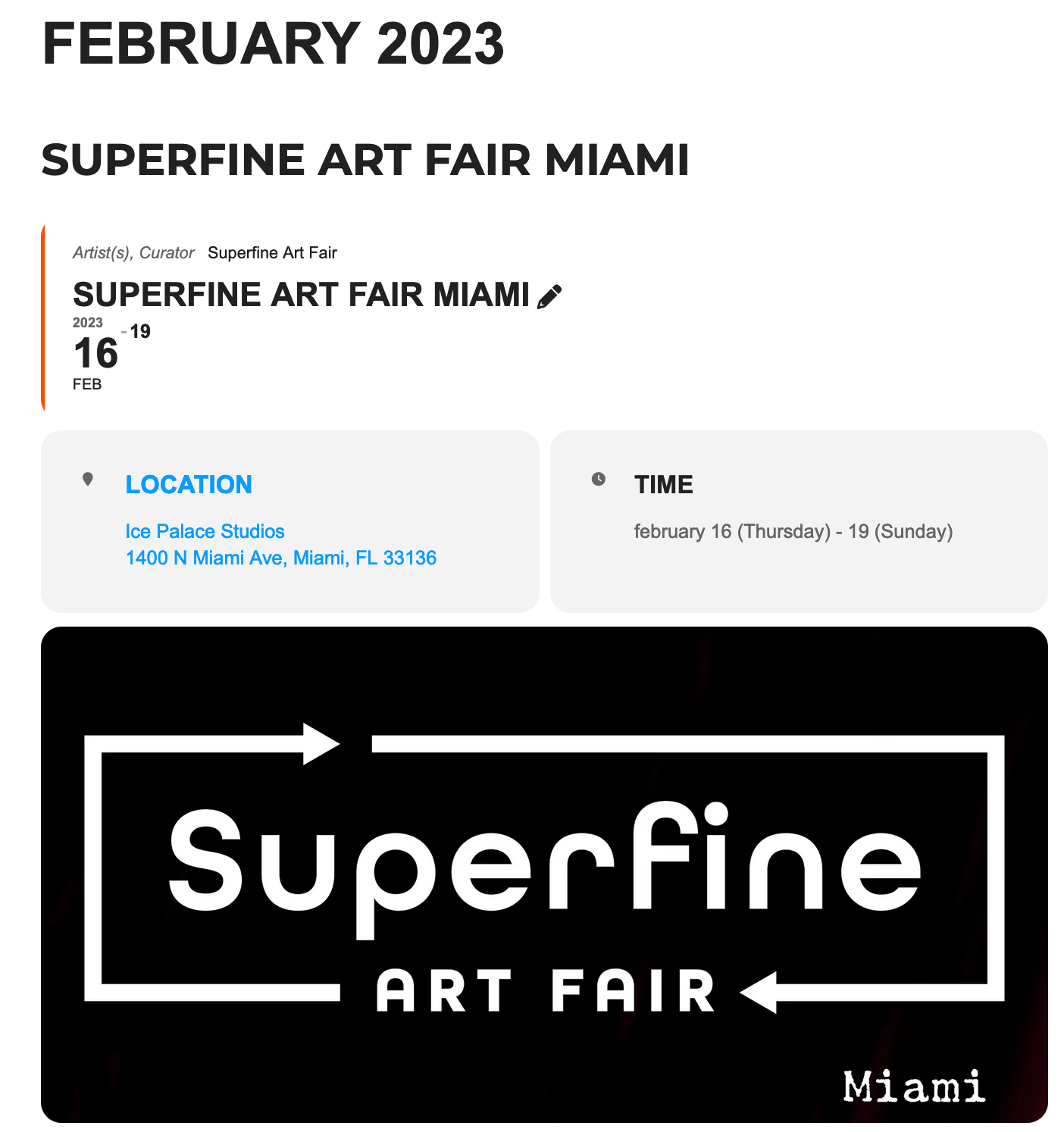Online visibility through SEO
Annually, hundreds of thousands of people search Google for city specific art information in NYC, MIA, and LAX. Most galleries are missing these opportunities by not optimizing for Google.
Search engines require a specific language to program data into their systems. Using this language gives your exhibition an opportunity to be promoted to art collectors visiting your area.
Google's "language" is known as SEO, Search Engine Optimization. @moma.nyc and @whitneymuseum hire expensive marketing firms to gain visibility through SEO. Our publishing submits your exhibition details to Google.
An exhibition webpage is not enough
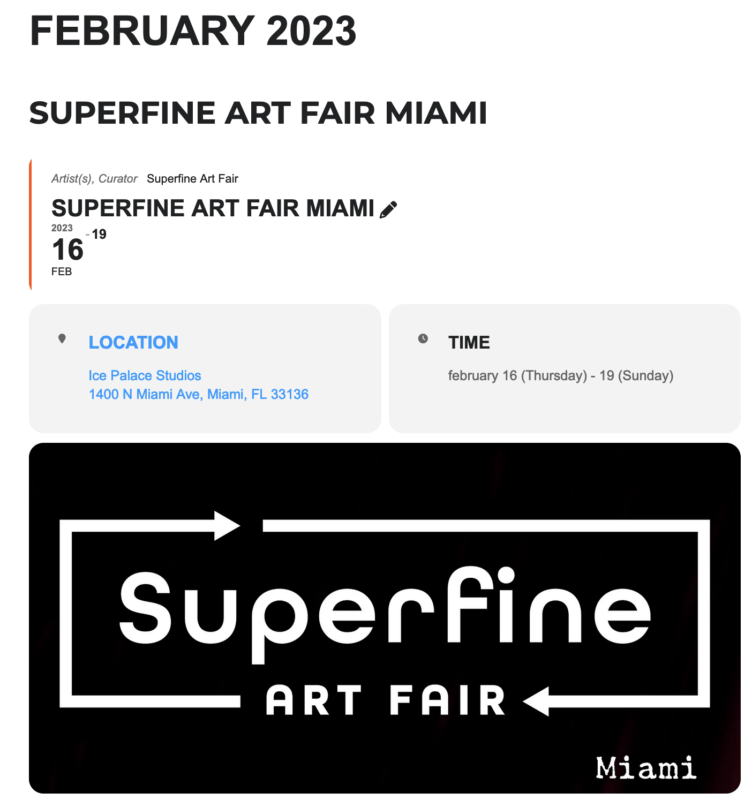
Art galleries publish beautiful photos and exhibition details on a webpage on their site. And its largely a dead end.
But major museums do something different seeing exponentially more vistors. @moma.nyc and @whitneymuseum use Schema & Structured Data.
Do you want Google to promote your art exhibition? OK! Then you must structure your Data EXACTLY the way they dictate.
Like an iceberg
DETAILS, DETAILS. ----> Art exhibition have alot of details. (location, artists, curator, dates, times, street address, website, Instagram accounts, etc). And most art galleries list this on their websites. Which does little to nothing to attract new art collectors.
Major museums do it different by putting hidden code on their website. This hidden code to help Google to 100% understand exhibition details. The hidden code that structures dates/times/etc is known as "Structured Data."
When you have structured data with the correct details, it allows Google to promote your events to art collectors in your area.
Rich Snippets
Have you ever done a Google search and seen images at the top of results? Perhaps a search for a recipe, an artist, or a movies? These pretty results at the top of Google are are know as Rich Snippets and they are the result of Structured data.
Below are 3 examples of RICH SNIPPETS featured on Google by xzib.com. These each have generated thousands of art collector visits to xzib.com.
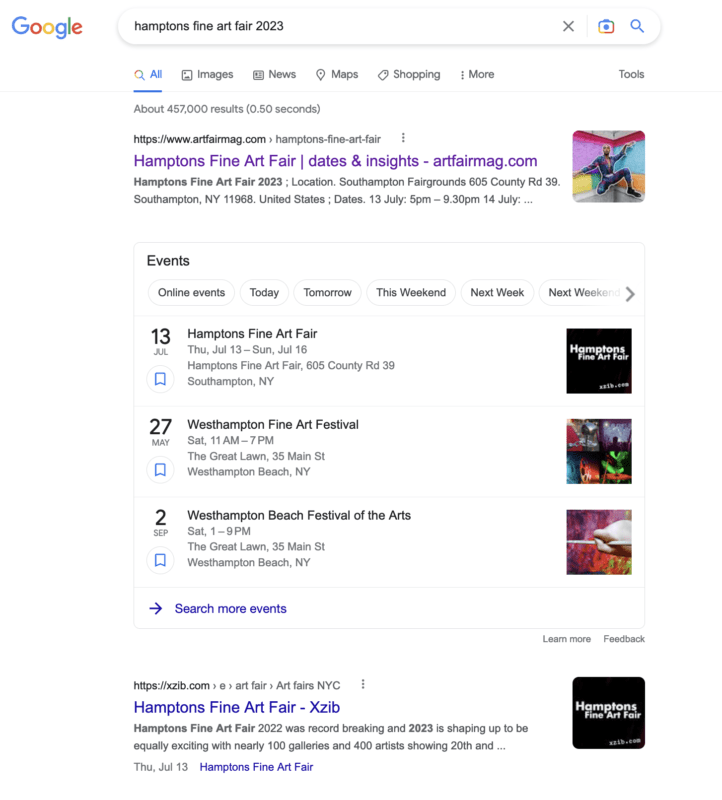
Hamptons Fine Art Fair
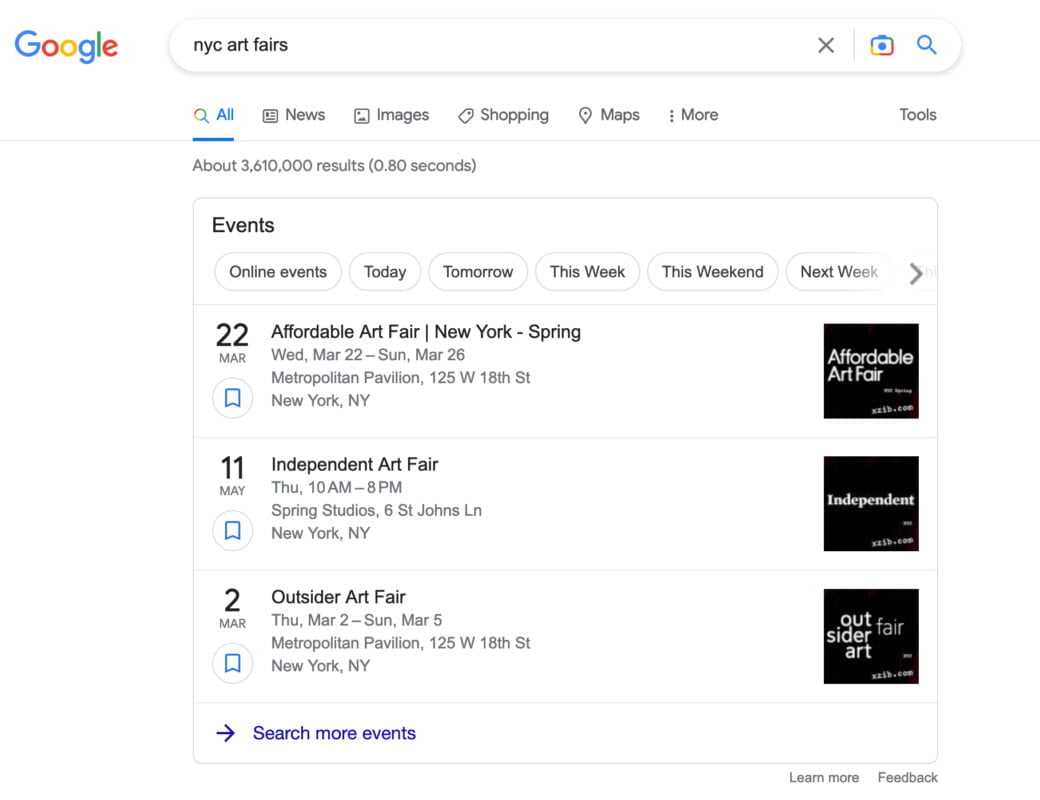
NYC art Fairs
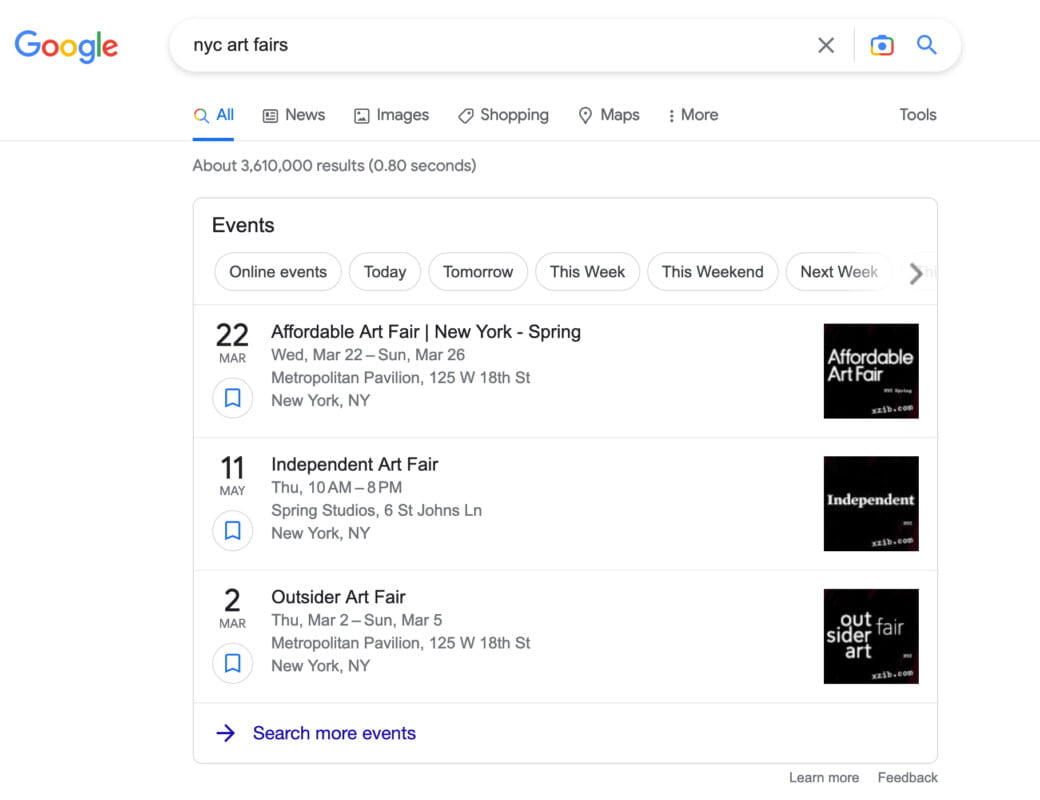
Rich Snippets on Google
Schema FAQ
u200bWhu200bat is Schema?
u200bSchema is the EXACT Language of the internet required by Google and other search engines for being featured.
Can I test my webpages u200bfor proper schema?
YES! Visit Schema.org, click Authenticator, and paste your webpage
Which pages u200bneed schema?
Every page you want featured on Google needs proper schema
How do I add schema to my own pages?
Watch this video to learn how to create event schema u200b+ artist schema + location schemau200b
Why submit events via xzib.com?
#1 u200bSchema is complicated, time consuming and requires consistencyn#2 Years of trial/error u200band 1000''s published makes us experts on success
Is a Google feature guaranteed with schema?
NO. Google features are never guaranteed. However the best content always wins on Google if submitted properly
Submission FAQ
Who Qualifies to list exhibitions on xzib.com?
IF you have been shown at a gallery, museum, or studio listed on xzib.com than you likely qualify to participate.
What is the cost to list on xzib.com?
We will charge a fee just like Artsy.net, eventually. However qualified artists and galleries are receiving discounted or free listing options through 2023.
What is the advantage of listing through xzib.com instead of my website?
Properly Listing exhibitions is time consuming and complicated and hiring someone requires competency to verify the accuracy of their work.
But the main reason to work through xzib.com is that you are able to keep your current website design and user experience the same. To properly implement Schema requires hidden code as well as front end design changes that would grossly change the design of your exhibition pages.
Instead, we create the ugly listings on our site and point those to your art website. So you can keep your cool art website design while increasing visibility on Google.
How to create event Schema for your website
The full process for creating schema for 1 exhibition or art fair
How to create event Schema for your website
The full process for creating schema for 1 exhibition or art fair


